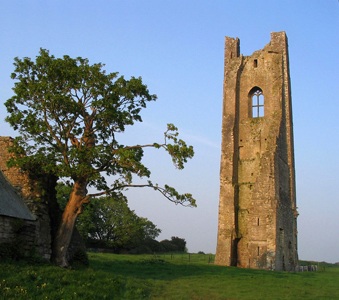Trim Castle, the largest Cambro-Norman castle in Ireland, was built over a period of 30 years by Hugh de Lacy, lord of Meath and his son Walter as the caput of the Lordship of Meath. It was used in the production of the film Braveheart.
Admission Fees
D Adult: €4.00
Sen/Group: €3.00
Child/Student: €2.00
Family: €10.00
E Castle Excluding the Keep
Adult: €3.00
Group & Senior: €2.00
Child/ Student: €1.00
Family: €8.00
Trim Castle
Contact Details
Address: Trim, Co Meath.
Telephone No: +353 46 943 8619
+353 46 9438964
Fax No: +353 46 943 8618
Email: trimcastle@opw.ie
The "sheep's gate" is what remains of the original walls of Trim. It stands near the 'yellow steeple' and the castle. The wall in this area is in ruins but it marks the original town boundary, the only intact part of the wall stands on Loman Street.
St. Mary's was an ancient religious house, its foundation predating the foundation of Armagh. The Augustinian abbey was burnt in 1143 and 1155 but was restored by Hugh de Lacy sometime prior to 1188. It was suppressed in 1539.

The Yellow Steeple takes its name from the golden colour of the stonework at sunset. It is a tall tower that was originally part of an Augustinian Abbey, St Mary's.

In the town of Trim, County Meath, people can visit St. Patrick’s Cathedral, which was built in 1803 on an historic site boasting a 15th-century stone tower.
Although bishops have been enthroned here since 1536, it was not raised to full Cathedral status until 1955. The present building features the first stained glass window that Edward Burne-Jones designed. The church porch and grounds contain a number of medieval graveslabs.
The cathedral at Newtown Trim was founded by Simon Rochfort, bishop of Clonard in 1202 for the Augustinian Canons. The church of the regular canons was used as the cathedral until the suppression of the monasteries during the reign of Henry VIII
The Priory was founded in the early thirteenth century by Simon de Rochfort for the Order of the Crutched Friars (Fratres Cruciferi). As well as being a monastery and guesthouse for pilgrims, the site also served as a hospital.